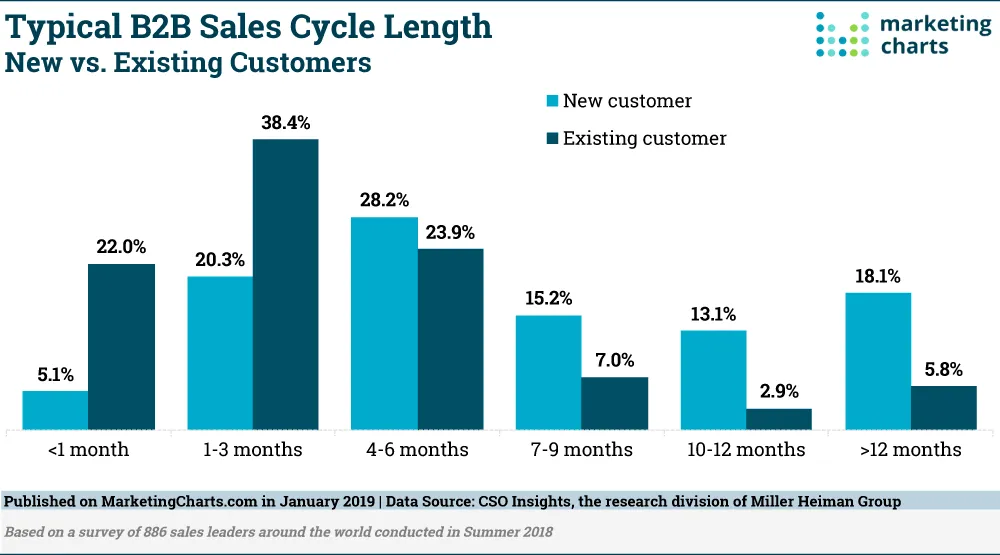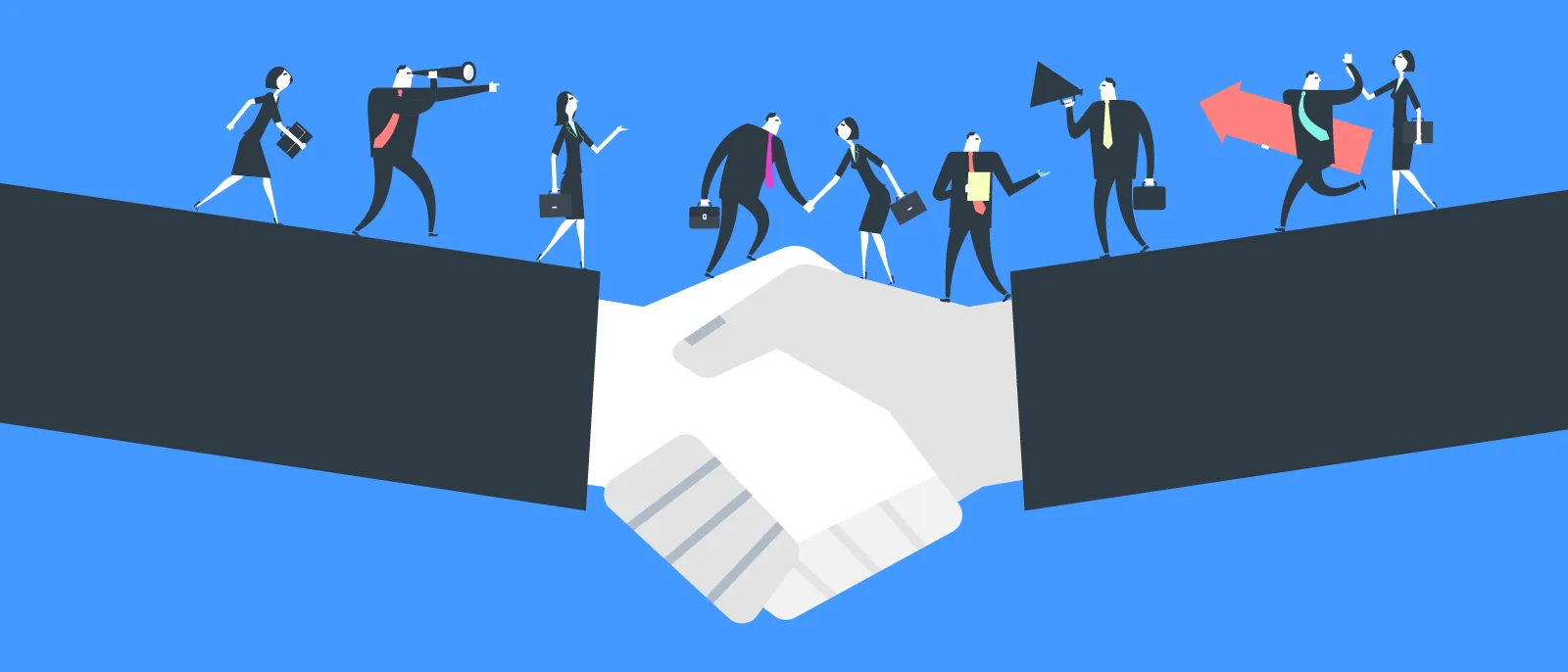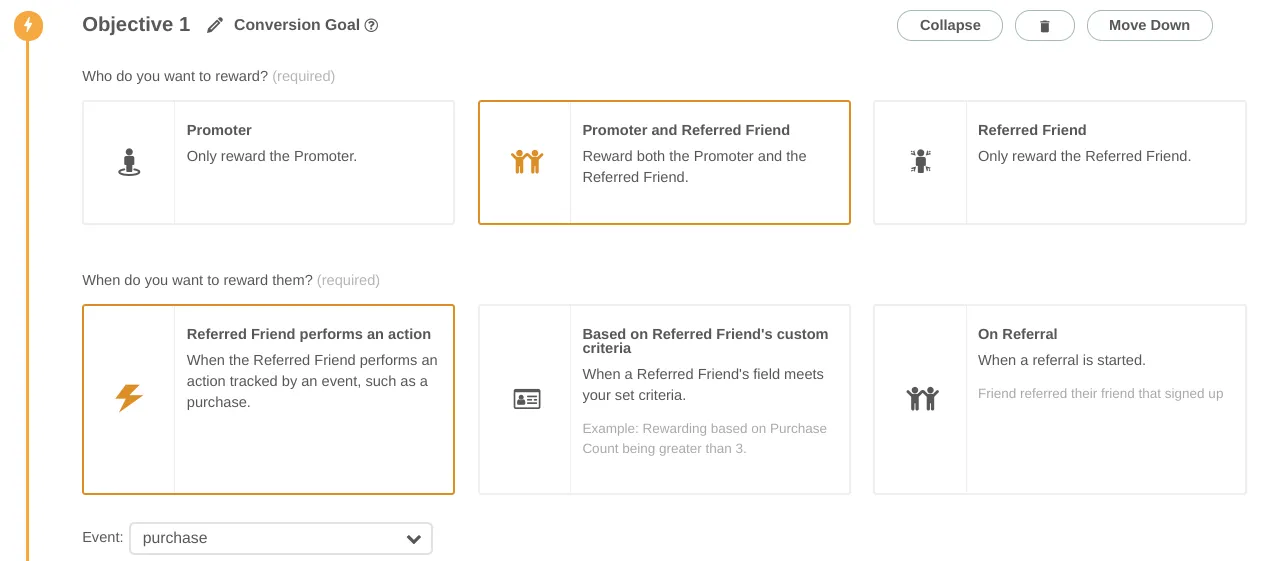B2B Referral Programs: How to reward at the right place & right time
Referral programs have long been built around consumer e-stores.
Referring a friend to make a purchase is effective when individual customers are expected to browse the site and make an independent purchase, all within a matter of minutes.
But what if your business model doesn’t look like this? What if a sale involves more than a few clicks? What if more than one person is involved in the purchase decision?

As a digital B2B brand, your prospects likely spend weeks or months researching various options, and need to invest time and effort to understand your value proposition -- they can’t just add your product to a cart and wait for shipping.
The goal of any referral program is to help your business acquire new customers at a lower cost by motivating your existing users to spread the word in exchange for a reward.
But asking your customers to refer a new prospect and have them wait 5 months for the sale to complete and finally earn their referral reward isn’t going to drive the best engagement.
This is why multi-objective referral programs are used as a way to motivate your existing customers with frequent rewards. They keep new prospects engaged even if your sales and onboarding process is long and complex.
Multi-objective referral programs solve the most common reasons why a single-checkpoint referral program might not work for your B2B business by:
- Keeping new customers engaged through a long and/or complex buying journey
- Motivating existing customers to consistently refer by offering instant gratification
- Engaging new users through a lengthy activation period
What is a multi-objective referral program?
Unlike a typical program where the referral is only considered successful when a purchase is completed, a multi-objective program sets smaller goals throughout the buyer’s journey where both the promoter and referred customer can be rewarded.
By setting various milestones and checkpoints, you make sure that advocates can be rewarded early, and you increase your chances of getting the sales process started and completed by a new customer.
Let’s look at some examples that can help support long sales cycles or activation periods:
Multi-objective programs for long sales cycles and activation periods
How do you keep customers and advocates engaged through a long sales cycle?
In the B2B market, it’s not uncommon for a sales cycle to last months.

If you ask an existing client to advocate on your behalf and refer a business in exchange for a reward, it’s unlikely that this will lead to an instant transaction, no matter how good the referral. Realistically, this referred lead will have several interactions with your sales team, deliberate internally, and eventually buy.
Plus, it’s unlikely that the staff member referred is actually the final decision-maker.
This means that only rewarding referrals when they turn into a signed contract is not enticing for your advocates if they know they’ll need to wait months before a chance of getting a reward.
So instead of asking your existing customers to refer new users to make a purchase, ask them to have their connections simply request a demo, or hop on an introductory call with your sales team. Then, reward both parties once this preliminary objective has been completed, and save more lucrative rewards for when the purchase is made official.
This way, your existing customers are more willing to help initiate the sales process when a reward is attainable, and the conversion activity feels do-able.
For example, a multi-objective referral program for a CRM software platform might look like this:
- Objective 1: When an existing customer refers a qualified lead who completes a product demo, give the existing customer a $25 gift card.
- Objective 2: When the referred customer signs a 12-month contract, reward both the new and referring customer with a $100 gift card.

Objectives can be added along the journey such as if the prospect pays their first invoice, schedules a consultation, or watches some educational content about the product.
Plus, varying rewards can be triggered based on what kind of contract the new customer signs, or what segment of your product line they engage with.
Why does this work?
By adding smaller objectives near the beginning of the buyer’s journey:
- Your existing customers are more willing to initiate the referral when the task at hand (ie. requesting a demo) is simple and attainable, meaning they will earn their reward quickly.
- Prospects are more willing to enter the sales funnel knowing that the ask (such as starting a free trial) is not binding, and may even benefit them with an extra reward upon completion.
While the person completing the demo or the free trial may not be the final decision-maker, this is your opportunity to build a relationship with a champion to advocate for the purchase internally.
Plus, when your existing customers know that there is a more lucrative reward down the road, they will stay engaged with their referred contacts to help push the sale forward.

How do we keep new users engaged throughout the activation period?
For many businesses, a successful referral ends in a purchase. But for others, a successful referral means that the new customer incorporates your product or service into their everyday routines and business processes - this is especially true for SaaS, subscription, and many on-demand services.
In other words, it’s crucial that the new customer engages with your product long enough to realize its value, and complete the “activation period”.
While attainable referral objectives can be added along the buying journey before the purchase is made, milestones can be added after the contract is signed to boost the activation rate.
This starts with understanding your ideal activation event, which can be found by looking at past data to uncover what actions or journeys are most likely to develop committed customers. It’s usually a combination of performing some specific actions (ie. using the software, logging a certain number of hours, integrating with a third-party app) over a sufficient period of time.
For example, a marketing automation tool (similar to Zapier or IFTTT) might create a multi-objective referral program like this:
- Objective 1: When an existing customer refers a qualified lead who signs up for a free trial, send the existing customer some branded swag for their office.
- Objective 2: When the referred customer purchases and adds the service to one product line, reward both the new and referring customer with a $100 gift card.
- Objective 3: When the referred customer has set up 10 employee accounts with the automation tool, or launched 5 new automation sequences, reward them with a 30% discount on their next month.

As the objectives become more and more valuable to creating a long-term relationship with the new customer, the value of the rewards also increases.
Why does this work?
Activation is an important step in preventing churn, and one that many subscription services and SaaS businesses can undermine or simply fail to consider.
By adding additional referral objectives after the contract is signed, newly referred customers are motivated to discover your value proposition first hand in order to earn additional rewards.
Plus, the customer who referred them is more likely to share positive opinions and encourage product usage when they can personally benefit with a reward.
This lowers your risk of churn and increases your upsell opportunities.
What kind of objectives can you set up in a referral program?
When setting up a multi-objective referral program in SaaSquatch, you can create objectives for:
- Referring a new customer to complete a specific task (demo, sales call, etc)
- Referring a specific kind of new customer (enterprise client, qualified lead, etc)
- Referring a new customer to engage with the product in a specific way (complete a free trial, activate a number of accounts, etc)
For each objective you can decide:
- Who to reward (Promoter, Referred Customer, or both)
- When to reward them (when the referred customer performs an action, or when they meet certain criteria)

For each objective, you set the reward that each party receives once the objective is complete. You can offer any of the rewards from our complete library of standard and custom rewards like discounts, credit, cash, gift cards, and more.
Instead of creating multiple referral programs that you have to manage separately, SaaSquatch lets you create a clear sequence of objectives for new customers and advocates to be rewarded for. Journey tracking is built-in to record where each user is in the process, and what reward they qualify for next.
Your customers are your most trusted sales team, so don’t leave them underutilized when they could be helping you move customers through the buying journey. When there is a good chance that referred users will take the first preliminary step, why not reward your advocates for helping make it happen?
While creating a multi-objective program can significantly contribute to the growth of your B2B brand, trying to build it on your own can quickly turn into a technical and tracking nightmare. Customer referral software like SaaSquatch has all the components you need to support your unique business model and take the pains out of growing.
All you need to do is define your referral program objectives and what rewards should be given out at the completion of each stage. Plus, you can:
- Set objectives based on custom user criteria and actions
- Set a different reward for each objective
- Choose how each objective or goal contributes your analytics in terms of conversions
- Re-order objectives on the fly
Empowering Your Business Growth with Multi-Objective Referral Programs
In today’s fast-paced and competitive B2B market, a traditional referral program may fall short in engaging customers through long and often complex sales cycles. What sets your business apart is the ability to understand and adapt to the unique buying journey of your prospects.
A multi-objective referral program offers the flexibility and creativity needed to keep both existing and new customers engaged and motivated. By setting specific and attainable objectives, rewarding customers at various milestones, and incorporating strategies tailored to long-term relationships, you can transform your referrals into a potent growth engine.
With SaaSquatch's innovative platform, you don't have to face the complexity and challenges of creating a multi-objective program alone. We provide you with the tools, customization, and analytics to make your referral program a powerful extension of your marketing efforts.
Are you ready to take the next step in harnessing the full potential of your customer base? Get in touch with us today and let's explore how SaaSquatch can support your unique business model, foster relationships, and drive your growth in a way that’s right for you.